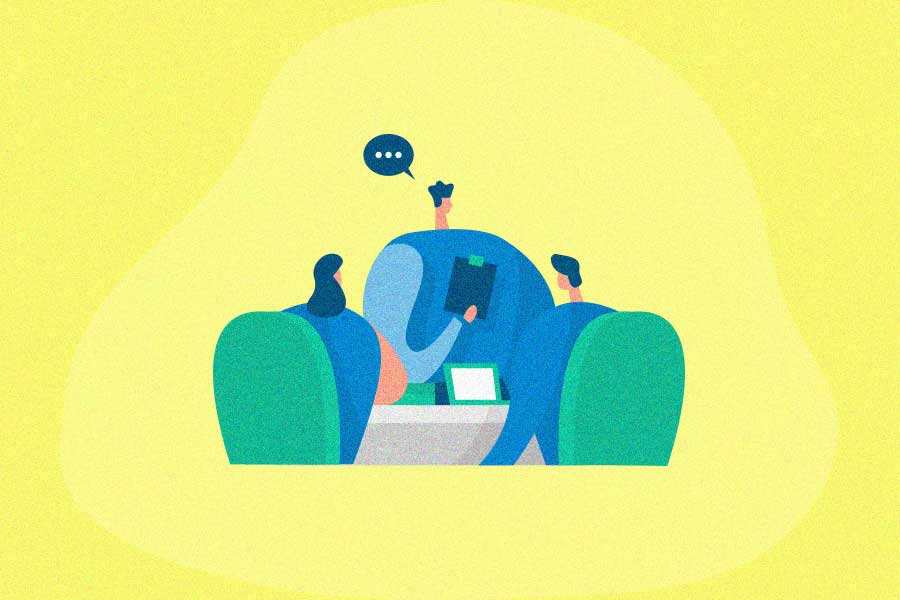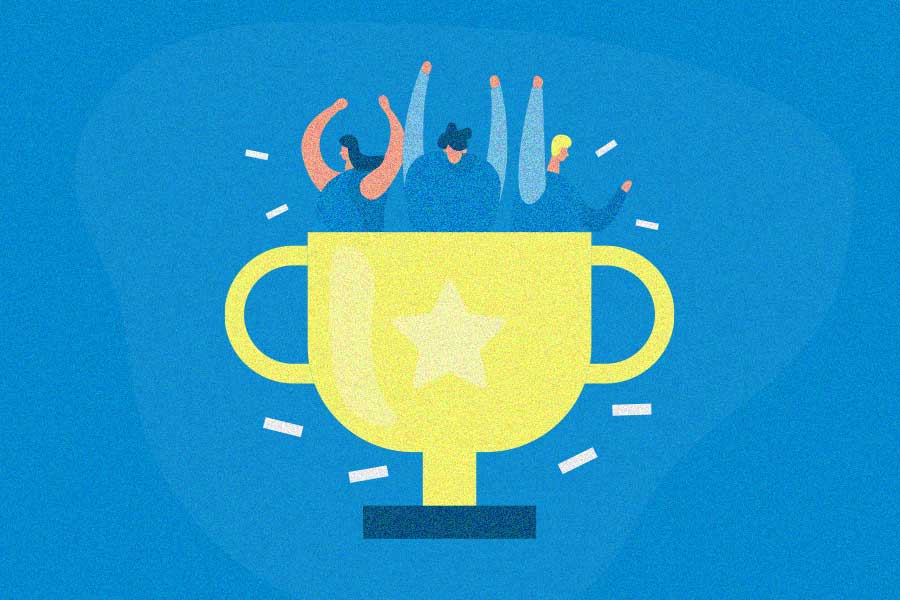In the highly competitive and ever-changing B2B markets, it’s essential to deliver outstanding services and quality products constantly. In turn, not only does this scenario attract new businesses, but it also ensures the loyalty of your existing customer base. Therefore, having an efficient B2B loyalty program can be a game-changer in fostering client relationships that pave the path for long-term business success.
This article aims to provide comprehensive insights for starting a B2B loyalty program, including advantages, best practices, potential challenges, and efficient management techniques. Plus, you’ll learn about an option that’s even more powerful than a B2B loyalty program.
What are B2B loyalty programs?
B2B loyalty programs are strategic initiatives designed to incentivize your loyal customer base, ensuring their repeated engagement with your business. Spanning across a variety of reward mechanisms and a deep understanding of client demands, they continually aim to cater to the specific needs of your business customers.
While the concept of loyalty programs is not new, implementing them effectively in the B2B domain requires a nuanced understanding of business dynamics, unlike the relatively simpler B2C landscape. B2B loyalty programs often demand more strategic planning, follow through, and regular optimization.
What do B2B loyalty programs involve?
B2B loyalty programs have unique characteristics and considerations, given the discernment, longer-term commitment, and higher value of B2B purchases:
- B2B loyalty tiers should be based on purchase value, with more perks for higher-priced purchases and repeat contract renewals.
- They should not involve “earn and burn” points or one-time perks like in B2C programs (traditional B2C loyalty programs were designed to motivate a lot of lower-value purchases).
- B2B loyalty benefits should all be active from the moment of purchase, like a VIP club.
- Rewards should ideally be personalized to the client’s needs and incentivize both the business and individual buyer.
- Rewards should either focus on your product or service and its long-term benefits, be experiential, or both.
Advantages of B2B loyalty programs
While investing in a B2B loyalty program may seem like it takes a significant time investment, the multitude of advantages it brings to the table makes it worthwhile. Not only does it enhance your company’s relationship with customers, but it also drives profitability and boosts your understanding of customer behaviors. Let’s discuss in detail:
- Strengthened customer retention: By promoting customer satisfaction and delivering value, loyalty programs inherently build trust among your customers. This trust, in turn, incentivizes them to repeatedly choose your firm’s services or products, hence fostering customer retention.
- Increased customer lifetime value: With better retention comes the benefit of increasing the lifetime value of your customers. When customers continually engage with your business, their lifetime value multiplies, giving a significant boost to your profitability.
- Access to valuable analytics: Loyalty program behavior often serves as a goldmine of data that provides insightful metrics about customer preferences, purchasing behavior, and satisfaction levels. By tracking this data and understanding usage patterns, you can optimize your program efficiently catering to their requirements.
- Robust, long-term business partnerships: Loyalty programs pave the way for stronger and longer-lasting relationships with your clients. When businesses realize the value you bring to their operations, they’re more than willing to maintain and deepen their relationship with you. This mutual trust and reliance make for enduring business partnerships.
Besides these, a well-managed loyalty program also helps in cross-selling and upselling opportunities, reinforcing your brand loyalty, and optimizing user experiences. Moreover, it also provides an excellent platform to test new offering prototypes, refine your services, and gain invaluable customer feedback.
Contrasting B2B and B2C loyalty programs
Despite the popular presence of loyalty programs in the B2C arena, their potential in B2B scenarios is equally prominent, bearing an even higher potential to influence significant business growth and research confirms this area is not utilized enough. However, the manifestation and approach differ, mostly because B2B scenarios involve a larger scale, prolonged commitments, and offers higher business value. This section further explains these critical differences and breaks down their implications.
B2C loyalty programs typically focus on individual customers, rewarding them for repeated purchase behavior. Conversely, B2B buying processes have more stakeholders, involving complex decision-making structures and longer sales cycles. Hence, B2B loyalty programs require a more personalized approach, dealing with client businesses on a case-by-case basis.
Furthermore, the rewarding mechanism in B2B loyalty programs is more intricate than their B2C counterparts, expanding beyond monetary incentives. They include learning resources, networking events, dedicated support, and other unique value propositions tailored to each business client. This situation further emphasizes the need for a systematic and strategic approach while structuring B2B loyalty programs.
Launching and managing B2B loyalty programs: Best practices
Launching a successful B2B loyalty program would, of course, demand effective strategizing and competent management. Every business is unique, and so are its clients. It is, hence, wise to conduct extensive brainstorming sessions and research before implementing a B2B loyalty program. This section will guide you through some of the best practices for constructing, launching, and managing your loyalty programs effectively.
Identify, understand and segment your target audience
Knowing your customers in the B2B spectrum is of prime importance. Recognizing the different subsets of your audience, understanding their unique requirements, and then creating specific ‘personas’ for each segment is the first step towards a tailored program delivery. These personas will guide your program design, reward settings, and communication strategies, thereby ensuring a more personalized and successful customer experience.
Set clear goals and objectives
A well-defined structure with clear goals and objectives forms the backbone of your loyalty program. Research shows that implementing a framework into your loyalty program is an important feature for you to consider. These objectives should align with your business operations, market dynamics, and customer expectations. Ideally, they should be measurable, realistic, and complemented by meaningful reward systems.
The effective use of KPIs (Key Performance Indicators) and regular monitoring will help track your program implementation further. Consequently, adjusting and optimizing your program becomes seamless.
Choose reward structures and incentives wisely
As mentioned earlier, the reward structure needs careful planning and should align with the identified customer needs. Therefore, having a meaningful system that resonates with your customer’s values and demands is essential for program success. Remember, a rewarding program in the true sense is not only about monetary benefits itself; it’s about how well it adds value to your customer’s business.
Personalize your B2B loyalty program rewards to each client’s needs, and make sure you have meaningful incentives for both the individual buyer and the business as a whole.
Remember – rewards should either focus on your product or service and its long-term benefits, be experiential, or both. They should always have a long-term impact. For instance, you might give the business free upgrades of your product or service, with added features. And on the individual buyer’s end, you might annually pay for the buyer to attend a conference that relates to their industry, that gives them learnings they can apply for a long time. To further encourage loyalty, higher-priced purchases and repeat contract renewals should lead to higher-value rewards.
Don’t offer points in a B2B loyalty program, as that kind of structure was meant to motivate low-value B2C purchases.
Design a streamlined user experience
A complicated or clunky loyalty program can act as a deterrent for your clients. Hence, designing a user-friendly, intuitive interface and providing a seamless experience is imperative. Make it easy for clients to enroll and participate – ideally, they should be automatically enrolled when they meet requirements, such as meeting a lifetime purchase threshold. Their perks should also get awarded automatically once earned. Automation and state-of-art technologies can aid in streamlining standard procedures and make program enrollment and navigation a breeze.
Highlight your benefits and value proposition efficiently
Launching a loyalty program would be in vain if your customers aren’t aware of its benefits, or the value it brings. Hence, effective advertising and communication strategies are crucial. Shed light on its unique features, illustrate successful case studies from other companies that have benefited, and demonstrate its added benefits through compelling promotional messages. Make sure these highlights align with their own business goals, to amplify customer participation. And reach clients with these messages on several channels, including email, social media, direct conversations, and within your client portal.
Inform and guide program participants regularly
Regularly informing and guiding participants about the program ensures the smooth functioning and success of your loyalty program. Keep them updated with any changes and improvements, and be ready to answer their queries. Provide clear, user-friendly training resources, and maintain a robust communication channel for customer support. Make sure your participants know how to contact you if they have questions. You might also further foster a sense of community and engagement through forums or exclusive events.
Optimize based on feedback and data analysis
A continuous learning and improving mentality is crucial for your B2B loyalty program. Keep analyzing participant behavior, identify trends,and optimize your program accordingly. Also, gather feedback from participants through surveys or interviews, and consider offering added rewards for giving feedback. Then, continuously improve program elements based on the insights and trends you spot in the surveys. Keep shaping your program to stay relevant and beneficial for your client businesses.
Build a customer-focused approach and loyalty culture
All said, the importance of a customer-centric approach in today’s business landscape cannot be understated. Foster a culture where the client’s needs and satisfaction are at the forefront. This mindset should reflect in all facets of your loyalty program – its design, workflow, reward system, and customer service.
Moreover, promoting this culture within your organization helps cultivate an ecosystem of motivated employees. They can then facilitate the outstanding delivery of services, thereby, building robust customer loyalty.
Overcoming challenges in B2B loyalty programs
No significant business endeavor comes without its share of challenges. B2B loyalty programs are no exception. Recognizing potential difficulties, like attributable costs, the complexity of the sales cycle, and efficient communication with decision-makers, is key to overcoming them and optimizing program results. In this section, we’ll shed light on these challenges and discuss a few strategies for tackling them.
B2B loyalty programs can often involve considerable upfront costs, including creating program infrastructure, integrating technologies, and maintaining operations. Therefore, ensuring sufficient resources and strategic planning for a high return on investment is crucial. Recognizing its long-term benefits and aligning it with your business objectives should guide your investment decisions.
Next, effective communication establishes a solid foundation for any B2B relationship. However, the B2B sales cycle usually involves multiple decision-makers and influencers, which can complicate communication. Designing clear communication strategies that cater to all stakeholders and developing a deep understanding of their individual motivations can significantly ease this process.
B2B referral programs: A step ahead of loyalty programs
Unsure whether a B2B loyalty program is the right call for you? B2B referral programs might be a better fit. B2B referral programs, in fact, offer advantages that B2B loyalty programs don’t bring.
- B2B loyalty programs encourage customer retention but don’t help you bring in new customers. Meanwhile, B2B referral programs help with both retention and new customer acquisition.
- B2B referral programs take loyal clients one step further, by turning them into reliable advocates.
- In a B2B referral program, you’ll give out rewards when customers bring you qualified leads or new customers – these rewards encourage your existing customers to stay loyal.
- And customers brought in through B2B referral programs tend to be most loyal, so a loyalty element is built into referral programs.
Many B2B rewards programs that are billed as “loyalty programs” actually have a focus on referrals and advocacy. So, if you’re thinking of running a B2B referral program, you’re in good company.
Wrapping up
B2B loyalty programs, when efficiently implemented and managed, can significantly enhance customer experience, build strong, long-lasting business relationships, and ensure your clients feel valued. However, recognizing its challenges, understanding potential obstacles, and addressing them are vital for their success. This comprehensive guide aims to provide you the necessary groundwork for building or optimizing your B2B loyalty program and driving your business to new heights of success. If you want a way to promote B2B customer loyalty and gain new customers, though, a B2B referral program will be a better fit.

![B2B Loyalty Programs: Elevating Your Business Success [+ How to Go One Step Further] 1 Customer-Loyalty-Statistics retention to profit](https://referralrock.com/blog/wp-content/uploads/2023/08/Customer-Loyalty-Statistics-retention-to-profit.jpg)
![B2B Loyalty Programs: Elevating Your Business Success [+ How to Go One Step Further] 2 b2b loyalty program by mailchimp](https://referralrock.com/blog/wp-content/uploads/2023/08/b2b-loyalty-program-by-mailchimp.png)



